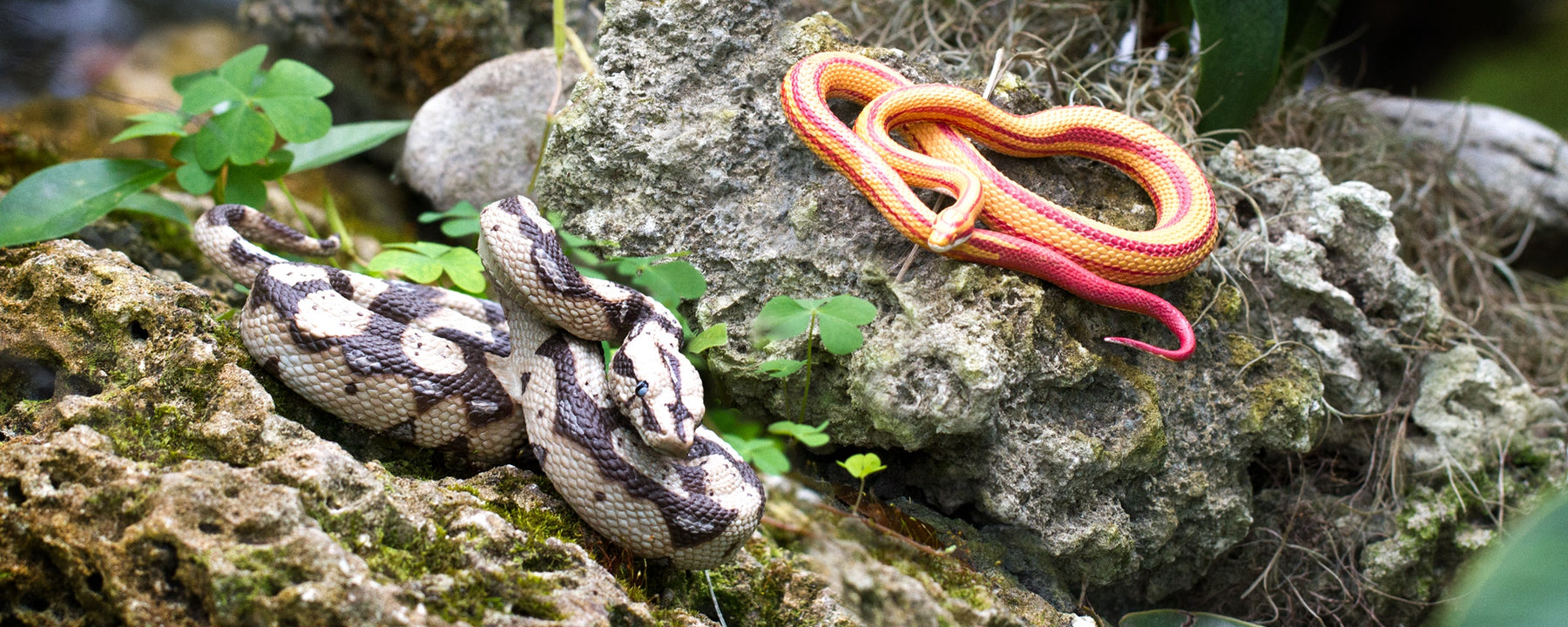
Safari Ltd® Slithers into Serpent Day!
February 1st is more than just the start of a new month…it’s also Serpent Day! It’s a day to celebrate all things slithery, especially snakes…but more than that, it’s a day to reflect on the role that the “serpent” plays in cultures across the world.
As a mythological symbol, the serpent shows up in many places throughout human history. Depending on the culture, it may symbolize fertility, death, life (rebirth), evil or temptation, to name just a few of its symbolic associations. Many mythical figures appear as serpents, including the serpent-like Hydra of Greek Mythology, the cobra-like Naga found in Hindu and Buddhist cultures, and the feathered serpent god Quetzalcoatl of the ancient Aztecs. You might recognize that last one as the namesake for the largest flying animal ever known, the prehistoric Quetzalcoatlus.
In the Bible, a serpent was also the creature who tempted Eve with a forbidden fruit in the Garden of Eden. In Norse Mythology, the Midgard Serpent Jörmungandr lives in the sea and is so large it can encircle the entire world. Similarly, the symbol of the Ourobouros, a serpent arranged in a circle biting its own tail, is a popular symbol with origins in Egypt and Greece, which symbolizes infinity and the circular nature of existence.
Today, the serpent endures on imagery such as the Rod of Asclepius and the Caduceus. Both are Ancient Greek symbols depicting serpents: the Rod features a snake wrapped around a staff, while the Caduceus depicts two snakes entwined around a staff with wings at the top. In modern times, both have come to be associated with medicine and healing, though only the Rod of Asclepius originally had that meaning. The Caduceus, traditionally associated with trade and commerce, has since become associated with healthcare mainly in the United States, due to its resemblance to the Rod of Asclepius.
| Boa Constrictor | Corn Snake |
It is believed, by some scientists, that the common association of serpents with evil, death and danger has its roots in evolution. Humanity’s primate ancestors likely feared snakes above many other predators, so the common fear of snakes may be the result of instincts passed on by our ancient relatives.
However, this fear of snakes, though common, may be largely overblown. Of the over 3,000 known species of snake, only 750 are venomous, and only a third of those species have venom powerful enough to easily kill a human. By and large, snakes prefer to be left alone and would rather flee than attack when confronted. Many snakes are completely harmless, and some even provide benefit to humanity, like the corn snake. This common North American species is often found near farms, where it preys on pest animals like rodents, which is helpful to farmers.
| Eastern Diamondback Rattlesnake | Coral Snake |
So the next time you encounter a snake, remember: keep your distance and treat it with the respect that all wildlife deserves. And while you’re at it, take the time to appreciate the rich cultural history of the slithery serpent.
Bernie's Bonus Fun Fact: Pythons and boas, two types of large constrictor snake, are often discussed as though they are one and the same. They actually have many differences, however. Boas live in the New World of North and South America and give birth to live young, whereas pythons live in the Old World of Africa, Asia and Australia, and lay eggs.

 Facebook
Facebook
 Twitter
Twitter
 Instagram
Instagram
